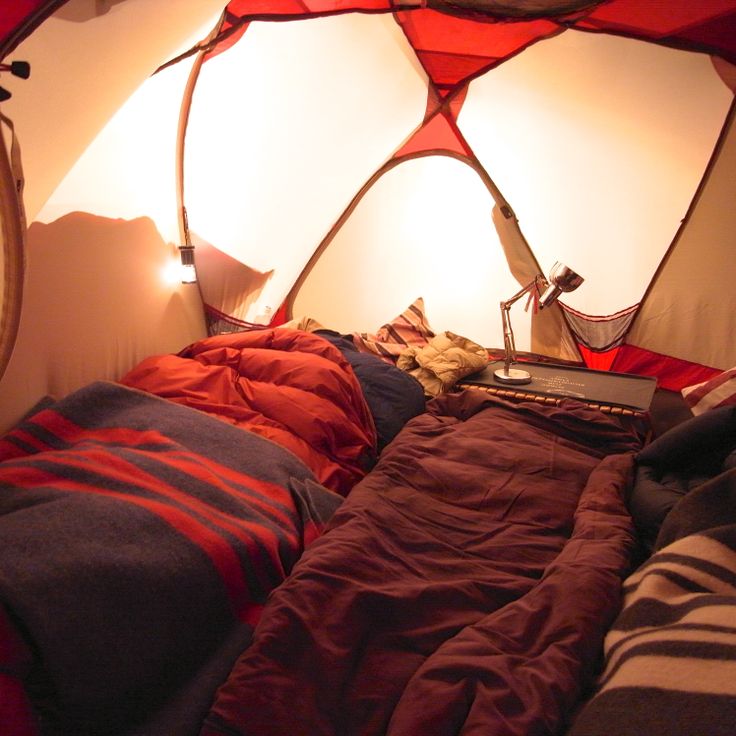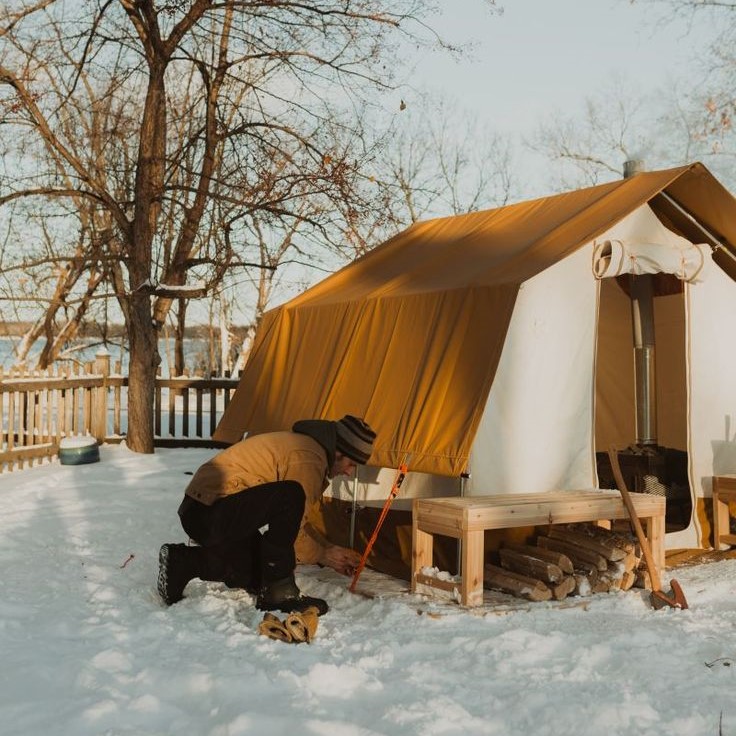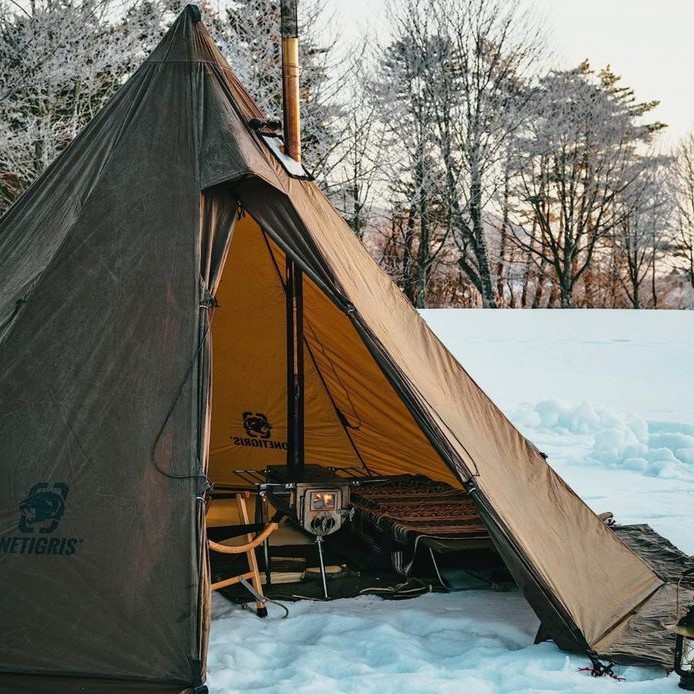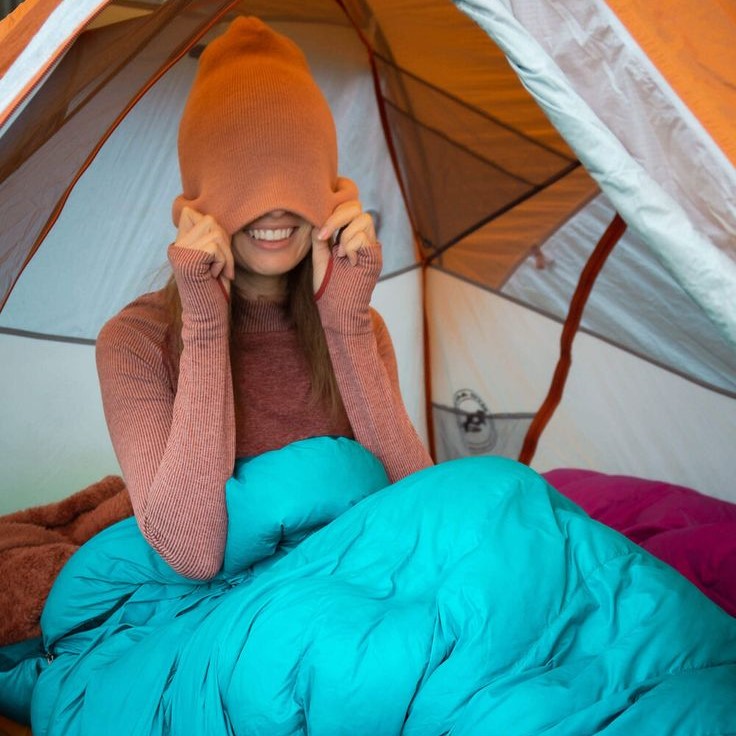Choosing the Right Tent
When planning a camping trip in cold weather, choosing the right tent is crucial for staying warm. Look for tents with the following features:
- Insulated Materials: A tent made with thicker fabric provides better insulation. Aim for materials like nylon or polyester with a high denier count.
- Fewer Mesh Panels: Opt for tents with fewer mesh openings. This helps retain heat inside and blocks cold winds.
- Proper Size: A tent that is just big enough for the occupants will warm up faster. Avoid extra large tents unless necessary.
- Season Rating: Ensure your tent is rated for the season. A three-season tent is suitable for fall and spring, while a four-season tent is designed for winter.
- Dark Colored Fabric: Dark colors absorb more sunlight during the day, which can help warm the tent slightly.
Incorporate these tips on how to stay warm in a tent by selecting the one that best suits your camping needs. Remember, the right choice can make a significant difference in comfort and warmth.

Understanding the Importance of Tent Insulation
Understanding why tent insulation is vital can help you grasp how to stay warm in a tent. Here’s why it matters:
- Minimizes Heat Loss: Insulation acts as a barrier. It keeps your body heat inside the tent.
- Blocks Cold Air: Well-insulated tents can prevent cold air from seeping in. This is key in cold climates.
- Moisture Control: Condensation can make a tent feel colder. Insulation helps to reduce moisture build-up inside.
Insulating your tent is not just about staying comfortable. It’s also about safety. In cold weather, hypothermia is a real risk. Proper insulation can prevent body temperature from dropping too low. Now that we know the importance of insulation, let’s proceed to choose the best sleeping equipment to pair it with.
Selecting the Best Sleeping Equipment
Choosing the right sleeping equipment is key for staying warm in a tent. Here are essential items to consider:
Quality Sleeping Bag
- Choosing the Right Temperature Rating: When selecting a sleeping bag, it’s crucial to pick one with a temperature rating that is lower than the coldest temperatures you expect to encounter during your camping trip. This ensures that the bag will provide sufficient insulation and warmth even in frigid conditions.
- Insulation Types: Look for sleeping bags that feature either down or synthetic insulation. Down insulation is known for its excellent warmth-to-weight ratio and compressibility, making it great for backpacking. Synthetic insulation, on the other hand, retains warmth even when wet and dries faster, making it ideal for humid conditions or wet environments.
- Bag Shape and Fit: Consider the shape of the sleeping bag as well. Mummy-style bags provide a snug fit that minimizes heat loss, while rectangular bags offer more space but can be less efficient in retaining warmth. Choose a shape that balances comfort with thermal efficiency.
Sleeping Pad
- Importance of Insulation: Using a thick, insulated sleeping pad is essential for staying warm while camping. The ground can quickly sap warmth from your body through conduction, leading to discomfort and cold nights.
- Types of Sleeping Pads: Look for sleeping pads with good insulation ratings (R-value) and thickness. Self-inflating pads or those with foam insulation offer a great balance of comfort and warmth, while inflatable pads can provide additional cushioning and insulation.
- Layering Pads: In particularly cold environments, consider using two pads—an inflatable pad on top of a closed-cell foam pad. This combination improves insulation and comfort, further protecting against the chill of the ground.
Layered Bedding
- Bringing Extra Blankets: In addition to your sleeping bag, bringing extra blankets for layering can enhance your warmth significantly. Layering allows you to easily adjust your comfort level by adding or removing blankets as needed throughout the night.
- Material Choices: Wool and fleece materials are excellent options for blankets. Wool is naturally insulating, breathable, and moisture-wicking, making it a reliable choice for warmth. Fleece is lightweight and soft, providing comfort while also retaining heat.
- Blanket Usage: Consider using a combination of materials—such as a wool blanket on the bottom and a fleece blanket on top—to maximize warmth and comfort. Additionally, placing a blanket over your sleeping bag can create an extra barrier against the cold.
Pillow
- Comfort and Heat Retention: A small, insulated pillow can significantly add to your comfort while sleeping, but it also plays a role in retaining heat around your head. Your head can release a considerable amount of body heat, so having an insulated pillow helps keep warmth contained.
- Choosing the Right Pillow: Look for pillows designed specifically for camping, which often have insulating properties and compress for easy packing. Some pillows even have a sleeve for stuffing clothes, allowing for extra warmth and comfort.
- Homemade Solutions: If you prefer not to carry a pillow, consider using a stuff sack filled with clothes as an alternative. This can provide adequate support and insulation, allowing you to maintain a cozy sleeping environment.
Ensure these items match the quality of your insulated tent. This way, you’ll optimize your warmth retention throughout the night. Remember to fluff up your sleeping bag before use, as this maximizes the insulation properties. With these sleeping essentials, you’ll enhance your ability to stay warm in a tent even further.
Dressing for Warmth Inside the Tent
When camping in the cold, how you dress is as key as your gear. Learning how to stay warm in a tent involves more than just insulated tents and sleeping bags; it extends to the clothes you wear. Here are some essentials to ensure you keep warm:
- Base Layers: Start with moisture-wicking base layers. These keep your skin dry and trap body heat.
- Insulating Layers: Add one or more insulating layers. Fleece or wool sweaters are great choices.
- Outer Layer: Wear a breathable, waterproof jacket. It guards against moisture and wind.
- Warm Socks: Thick wool socks work best. They keep your feet warm and dry.
- Hat and Gloves: A lot of heat escapes from your head and hands, so cover them well.
- Dry Clothing: Keep a dry set of clothes handy. Change out of anything damp to avoid cold.
By layering effectively and choosing materials that insulate and protect, you play a crucial role in how to stay warm in a tent. Dress smart to combat the chill and enjoy a restful night under the stars.
Maximizing Body Heat Retention
Maximizing body heat retention is essential in understanding how to stay warm in a tent. Here are several strategies:
- Stay Dry: Moisture wicks away heat, so always stay dry. Remove any damp clothing before getting into your sleeping bag.
- Use a Hat: Wear a hat while sleeping. A significant amount of body heat can escape through your head.
- Insulate from Below: Enhance ground insulation with a high R-value sleeping pad. This prevents heat loss to the ground.
- Share Warmth: Camp with a partner and share a tent if possible. The combined body heat helps keep both of you warm.
- Stay Compact: Keep your knees to your chest and hands close to the body while sleeping. This position conserves body heat.
- Heat Packs: Use chemical heat packs for extra warmth. Place them in your sleeping bag at the foot end.
- Use a Bivy Bag: A bivy bag around your sleeping bag adds an extra layer of heat retention.
- Blanket Layering: Place a blanket over your sleeping bag. This traps more heat inside.
- Wear a Balaclava: Protect your face and neck with a balaclava. This reduces heat loss from exposed skin.
Prioritize these body heat retention tips alongside using the right tent and sleeping equipment. Combined, they considerably enhance your chances to stay warm in a tent.
Practical Tips for Tent Heating
To ensure a cozy camping experience, here are practical tips on how to stay warm in a tent:
- Portable Tent Heaters: Consider a safe, portable tent heater. Always follow safety instructions and ventilate well.
- Hot Water Bottles: Fill them with hot water before bedtime and place them by your feet for extra warmth.
- Thermal Blankets: Use thermal or reflective blankets to line the tent walls. They reflect body heat back to you.
- Clothing Layers: Instead of bulky clothes, sleep in multiple lighter layers that trap body heat more effectively.
- Warm Drinks: Sip on warm, non-alcoholic beverages to maintain inner warmth. Avoid caffeine as it can cool the body.
- Insulated Curtains: Hang insulated curtains or cloths over the tent entrance to keep cold air out.
- Windbreaks: Set up external windbreaks such as tarps or natural barriers to shield your tent from cold winds.
By incorporating these heating strategies, you add another layer of warmth to your tent. Pair these tips with the right gear and clothing for the ultimate defense against the cold.
Weatherproofing and Tent Location Strategies
In learning how to stay warm in a tent, the right spot and weatherproofing are crucial. Follow these strategies:
- Choose the Best Site: Locate your tent away from wind paths. Use natural barriers, like trees or hills.
- Use a Tent Footprint: Place a waterproof footprint under your tent. It stops ground moisture and adds insulation.
- Elevate Your Tent: If possible, set your tent on a slightly elevated area. It prevents cold air pooling underneath.
- Seal Seams: Apply seam sealer to your tent. It blocks out moisture and drafts from entering.
- Tarp Over Tent: Set up a tarp above your tent. This adds a layer of protection against rain or snow.
- Utilize Sun Exposure: Position your tent to catch the morning sun. This provides natural warmth to start your day.
- Clear Snow: If in snow, clear it from around your tent. Snow acts as a barrier and traps cold air.
Implementing these strategies keeps you warmer by protecting against elements that cause heat loss. Location choice, combined with proper weatherproofing, can make a significant difference in how warm you stay in your tent.
Staying Warm with Food and Hydration
In the bid to master how to stay warm in a tent, don’t overlook the power of food and hydration. The right intake can actually increase your body’s heat production, which is especially valuable in cold conditions. Here are practical tips:
Eat High-Energy Foods
- Importance of Caloric Intake: Consuming foods rich in calories is essential when trying to stay warm, especially in cold conditions. High-energy foods provide the necessary fuel for your body’s metabolism, which generates heat.
- Examples of High-Energy Foods: Foods such as nuts, chocolate, and cheese are excellent choices for sustained energy release. Nuts are packed with healthy fats and protein, making them a great snack option. Dark chocolate offers both calories and quick energy, while cheese provides fat and protein for longer-lasting energy.
- Frequent Snacking: Incorporate high-energy snacks throughout the day to maintain your calorie intake. Eating smaller, more frequent meals can help keep your energy levels stable, ensuring your body remains warm.
Warm Meals and Drinks
- Heating Up Meals: Hot meals are more effective at raising your core temperature than cold foods. Consider carrying a portable stove or a campfire setup to heat up your meals during your outdoor activities.
- Soups and Stews: Warm soups and stews are excellent choices because they are not only filling but can also be packed with nutritious ingredients. They provide warmth and hydration, which is vital in cold environments.
- Warm Beverages: In addition to meals, warm beverages like tea, hot cocoa, or broth are beneficial. These drinks can significantly elevate your body temperature and provide comfort, making them a great addition to your outdoor eating plan.
Stay Hydrated
- Importance of Hydration: Staying hydrated is crucial for your body’s ability to regulate temperature effectively. Dehydration can lead to decreased energy levels and make it more challenging for your body to generate heat.
- Using Insulated Bottles: To prevent your liquids from freezing in cold conditions, use insulated bottles. These bottles help maintain the temperature of your drinks, ensuring that you have access to warm liquids throughout your outing.
- Signs of Dehydration: Be mindful of the signs of dehydration, such as fatigue, dizziness, or dark urine. Make it a habit to drink water regularly, even if you don’t feel thirsty, especially during physical activities.
Avoid Alcohol
- Understanding Alcohol’s Effects: While alcohol may give a temporary feeling of warmth due to dilating blood vessels, it actually decreases your core body temperature over the long term.
- False Sense of Security: Consuming alcohol while in cold conditions can create a false sense of security regarding warmth. This can lead you to overlook the need for proper warmth and insulation.
- Focusing on Healthy Choices: Instead of alcohol, choose hot beverages without alcohol that promote warmth and hydration. This helps you maintain your core temperature more effectively.
Snacking Before Bed
- Benefits of Late-Night Snacks: Having a nutritious snack before sleeping is an effective way to keep your body fueled during the night. This additional calorie intake supports your metabolism and can enhance heat production as you rest.
- Ideal Snack Choices: Consider high-calorie snacks such as trail mix, nut butter, or a cheese and cracker combo. These foods are nutrient-dense and provide healthy fats and proteins, which are great for overnight energy support.
-
Preparing for Sleep: Eating a snack before bed not only supports your metabolism but also helps keep you comfortable and cozy during your sleep, increasing your chances of staying warm throughout the night.
How to stay warm in a tent? By keeping these nutritional strategies in mind, you can complement your gear and add another layer in your fight against the cold. Eating smart is as crucial as dressing right or choosing the correct sleeping equipment when you aim to stay warm in a tent.



